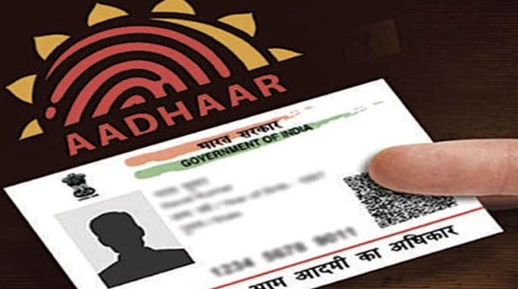| (General Studies Paper-2: Government policies and interventions for development in various sectors and issues arising out of their design and implementation.) |

Context
The Public Accounts Committee (PAC) of Parliament has called for a review of the functioning of the Unique Identification Authority of India (UIDAI), including the high rate of failure in Aadhaar biometric authentication, which may deprive many beneficiaries of social welfare schemes.
Related Issues
High authentication failure rate
- The PAC noted a high rate of biometric failure, particularly among the elderly, manual labourers and tribal population.
- This deprives them of essential welfare services such as the Public Distribution System, pensions and MNREGA wages.
Inclusion-exclusion errors
- Fingerprints of many manual labourers are not read correctly by the machines. In the case of the elderly, there is often a mismatch in iris pattern matching.
- There are currently more Aadhaar cards in use than the total population of the country, indicating possible duplication and delays in deactivating cards of the deceased.
- Mandatory linking of Aadhaar with welfare schemes has resulted in genuine beneficiaries being deprived of these schemes.
Privacy and Security Concerns
The Committee raised concerns over data privacy, potential misuse and surveillance risks, citing weak security measures.
Excessive reliance on Aadhaar
- The PAC criticised the excessive reliance on Aadhaar-based authentication without any alternative arrangements.
- The Committee urged for alternative methods of identification to avoid disenfranchisement.
Lack of Accountability
The Committee noted the lack of robust grievance redressal systems as well as lack of transparency and audit in the functioning of UIDAI.
Recommendations
- Independent review of the functioning of the Aadhaar system and UIDAI.
- Establish strong legal safeguards to protect privacy.
- Develop alternative identification mechanisms for beneficiaries.
- Improve grievance redressal and accountability framework.
|
|
|
Also know
The Public Accounts Committee (PAC) of Parliament is a very important permanent parliamentary committee, whose function is to monitor financial accountability and government expenditure.
Establishment
- The Public Accounts Committee was established in the year 1921 under the Montagu-Chelmsford reforms.
- It is a permanent parliamentary committee, which is reconstituted every year.
Structure
- Total members: 22 members
- 15 members from Lok Sabha
- 7 members from Rajya Sabha
- Basis of membership: On the basis of proportional representation so that different political parties can get representation.
- Chairman: Traditionally the Chairman of the Public Accounts Committee is from the opposition party.
- The Chairman is appointed by the Speaker of the Lok Sabha.
Main functions/functioning
- To examine the reports of the Comptroller and Auditor General of India (CAG).
- To see whether the funds sanctioned by the Parliament have been used for the right purpose and in accordance with the law.
- To review the effectiveness, efficiency and transparency of government expenditure.
- To report on financial irregularities of ministries/departments.
Importance
- PAC strengthens the monitoring role of Parliament while making the government accountable.
- It is an effective means of ensuring financial transparency.
- PAC reports are tabled in Parliament and discussed.
Limitations
- The committee can only investigate and make recommendations; it does not have the power to take action.
- It can function only after the CAG report is received, hence it is post-facto in nature (i.e. investigation after the expenditure has been made).
|